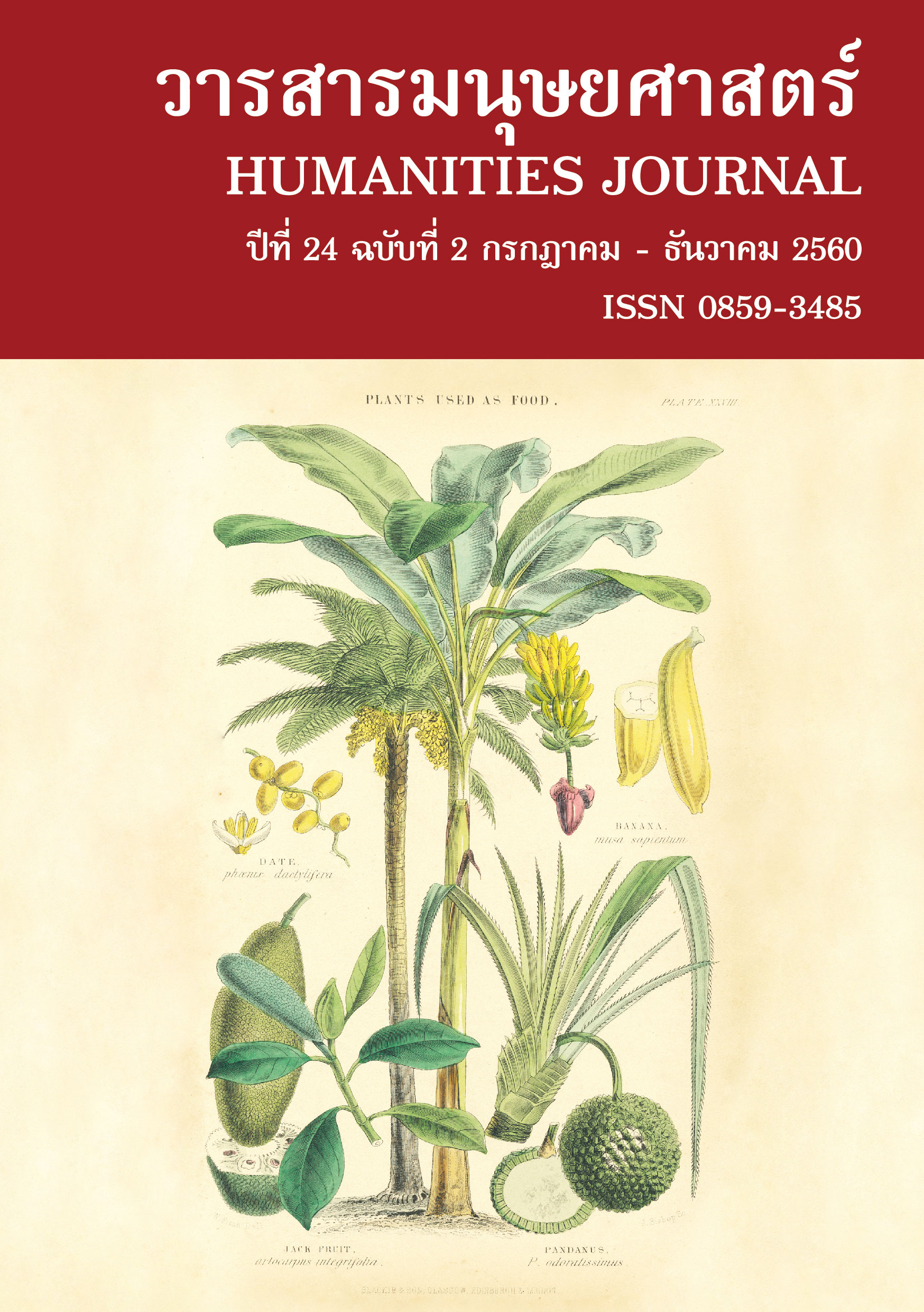คุณภาพบริการอิเล็กทรอนิกส์ของห้องสมุดสถาบันอุดมศึกษา
Main Article Content
Abstract
การบริการเป็นหัวใจของห้องสมุดสถาบันอุดมศึกษาเนื่องจากการบริการจัดขึ้นเพื่ออำนวยความสะดวกแก่ผู้ใช้ในด้านการอ่าน การค้นคว้าและการวิจัย ประกอบด้วยการบริการพื้นฐานและการบริการเฉพาะ แต่ด้วยผลกระทบของเทคโนโลยีสารสนเทศทำให้รูปแบบการบริการมีการปรับเปลี่ยนไปสู่การบริการในรูปแบบอิเล็กทรอนิกส์ ทั้งนี้เพื่อให้ผู้ใช้เข้าถึงทรัพยากรสารสนเทศและบริการได้อย่างสะดวกและรวดเร็วที่สุด อีกทั้งสามารถตอบสนองความต้องการของผู้ใช้ในยุคปัจจุบันได้ คุณภาพบริการอิเล็กทรอนิกส์ของห้องสมุดสถาบันอุดมศึกษาเป็นสิ่งสาคัญในการสร้างความแตกต่างและเป็นเอกลักษณ์ คุณภาพของบริการเป็นการรักษาระดับในการให้บริการที่ดีและมีประสิทธิภาพ โดยห้องสมุดจะต้องจัดบริการให้มีคุณภาพตามที่ลูกค้าคาดหวัง และมีเกณฑ์ในการพิจารณาคุณภาพ ได้แก่ ความน่าเชื่อถือ การตอบสนอง การเข้าถึง ความสามารถในการยืดหยุ่น ความง่ายของระบบนำทาง ความมีประสิทธิภาพ ความมั่นใจและความน่าเชื่อถือ ความปลอดภัยและความเป็นส่วนตัว ความสวยงามของเว็บไซต์ ซึ่งคุณภาพการบริการจะก่อให้เกิดความสัมพันธ์ที่ดีแก่ผู้ใช้บริการ ช่วยกระตุ้นให้ผู้ใช้บริการกลับมาใช้บริการอย่างต่อเนื่อง ตลอดจนเป็นการสร้างความสัมพันธ์ที่ดีในระยะยาว และก่อให้เกิดความจงรักภักดีในการใช้บริการของห้องสมุดสถาบันอุดมศึกษาต่อไป
Article Details
References
สำนักงานเลขาธิการสภาผู้แทนราษฎร. สำนักวิชาการ. (2557). รายงานการเดินทางเข้าร่วมประชุมสหพันธ์ระหว่างประเทศว่าด้วยสมาคมและสถาบันห้องสมุด. สืบค้นเมื่อ 2 กุมภาพันธ์ 2560 จากhttp://library2.parliament.go.th/wichakarn/content-seminar/r20140810.pdf
Batagan, L., Pocovnicu, A. & Capisuzu, S. (2009). E-service quality management. Journal of
Applied Quantitative Methods,4(3): 372-381. Retrieved December 20, 2016, from
http://www.jaqm.ro/issues/volume-4,issue-3/pdfs/batagan_pocovnicu_capisizu.pdf
Boyer, K.K., Hallowell, R. & Roth, A.V. (2001). E-Services: Operating Strategy-A Case Study and A Method for Analyzing Operational Benefits. Journal of Operational Management, 20, 175-188.
Cotirlea, D. (2011). Issues Regrading E-service Quality Management-customization on Online
Tourism Domain. Polish Journal of Management Studies, 3. Retrieved December 20,
, from http://www.pjms.zim.pcz.pl/issues-regarding-e-service-quality-management---
customization-on-online-tourism-domain---kopiuj.php
Einasto, O. (2014). E-service quality criteria in university library: a focus group study.
Prociedia-Social and Behavioral Science,147(2),561-566.
Gratzer M., & Winiwarter W., (2003). A framework for competitive advantage in eTourism,
Retrieved December 20, 2016, from
www.homepage.univie.ac.at/werner.winiwarter/enter2003.pdf
Gronroos, C. (1982). Relationship Approach to Marketing in Service Contexts: The marketing and organizational behavior interface. Journal of Business Research, 20(1), 3-17.
Hernon, P. & Calvert, P. (2005). E-service quality in libraries: exploring its features and dimensions. Library and Information Science Research, 27(3), 377-404.
Hopker, O., & Hole, S. (2001). Small and medium-sized enterprises in the e-world - an application
of quality standards. In Proceedings of the 6th International Conference on ISO 9000 and
TQM, Paisley: Paisley Business School.
IFLA. 2006. IFLA Digital Reference Guidelines.Retrieved January, 15, 2017, fromhttp://www.ifla.org/files/assets/reference-and-information-services/publications/ifla-digital-reference-guidelines-en.pdf
Lewis, R. C., & Booms, B. H. (1983). The marketing apects of service quality. In L. Berry, G. Shostack, & G. Upah (Eds.), Emerging Perspectives on Service Marketing, (p.99-107). Chicago, IL: American Marketing.
Lincoln, Y. S. (2002). Insights into Library Services and Users from Qualitative Research. Library & Information Science Research, 24(1), 3-16.
Nitecki, D. A. (1996). Changing the concept and measure of service quality in academic libraries.
Jounral of Academic Librarianship, 22(3), 181-191.
Norfolk Public Library. (2014). Electronic Services Policy. Retrieved Novermber 3, 2016, from
http://library.virtualnorfolk.org/Public_Documents/NPL_docs/E-Services%20Policy.pdf
Ojasolo, J. (2010). E-service Quality: A Conceptual Model. International Journal of Arts
and Sciences, 3(7), 127-143.
Parasuraman, A., Zeithaml, V.A. & Malhotra, A. (2005). E-S-QUAL – A multiple-item scale for
assessing electronic service quality. Journal of Service Research, 7, 1-21.
Reynolds, J. (2000). The Complete E-commerce Book: Design, Build and Maintain s Successful
Web-based Business. New York: CMP-Books.
Rust, R.T. & Lemon, K.N. (2001). E-Service and the Consumer. International Journal of Electronic
Commerce,5(3), 85-101.
Saanen, Y. A., Sol, H. G. & Verbraeck, A. (1999). Snapshots of e-commerce’s opportunities
Management. London: Auerbach.
Santos, J. (2003). E-service quality - a model of virtual service dimensions. Managing Service
Quality, 13(3), 233-247
Surjadjaja, H., Ghosh, S. & Antony, J. (2003). Determining and assessing the determinants of e-
service operations. Managing Service Quality, 13(1), 39-53.
Szymanski, D.M., & Hise, R.T. (2000). E-satisfaction: an initial examination. Journal of Retailing.
(3): 309–322.
Van Riel, A.C.R., Liljander, V. & Jurriëns, P. (2001). Exploring consumer evaluations of eservice:
a portal site. International Journal of Service Industry Management, 12(4), 359- 377.
Whitman, M. E.& Woszczynski, A. B. (2004). The handbook of information systems research. Hershey, PA.: Idea Group Pub.
Yoo, B. & Donthu, N. (2001). Developing a Scale to Measure the Perceived Quality of an
Internet Shopping Site (SITEQUAL). Retrieved January, 15, 2017 from
https://www.researchgate.net/publication/ 253950208
Zeithaml, V., Parasuraman, A. & Berry, L.L.(1990). Delivering service quality: balancing
customers perceptions and expectations. New York: The Free Press.
Zineldin, M. (1996). Bank strategy portioning and some determinants of bank selection.
International. Journal of Bank Marketing, 14(6), 12-22.


